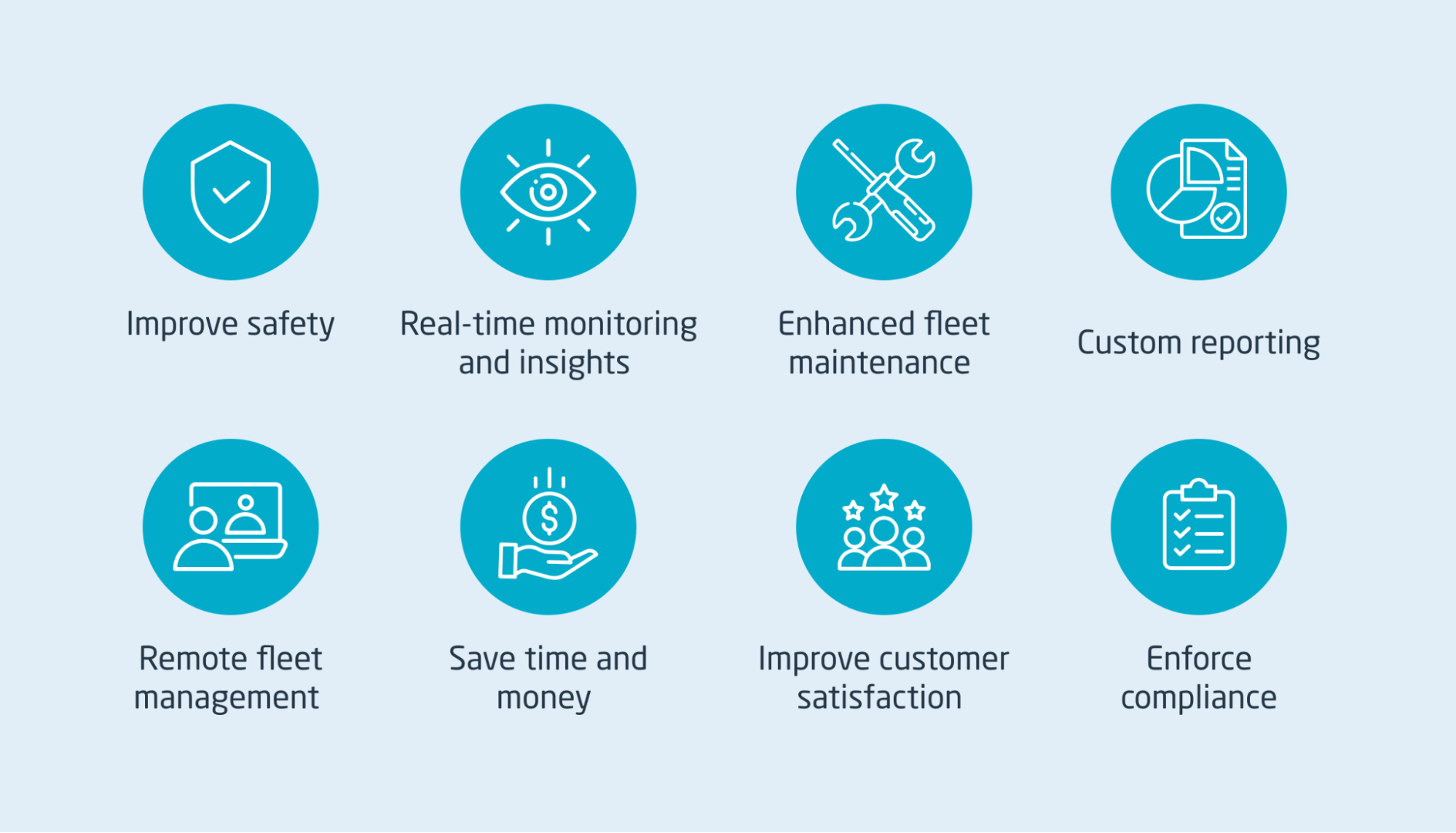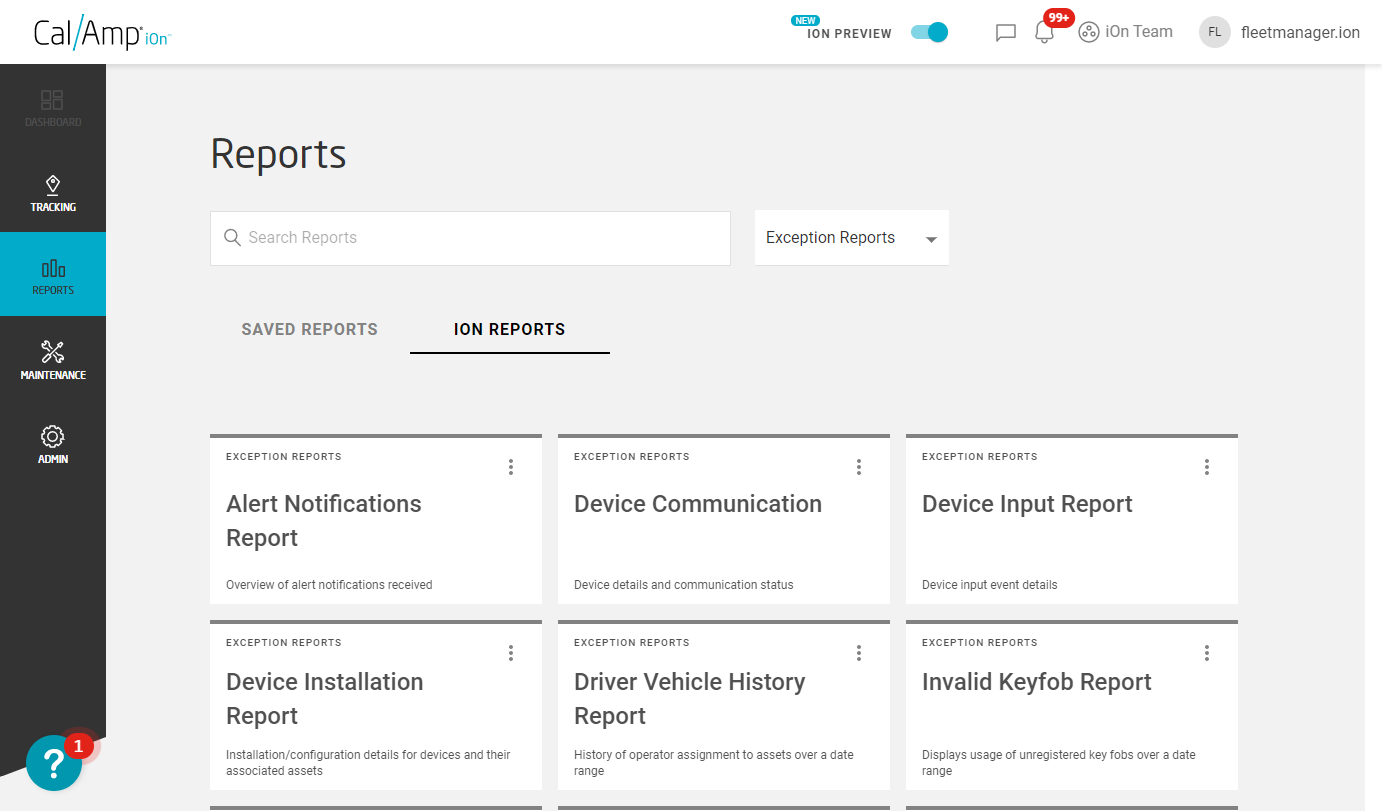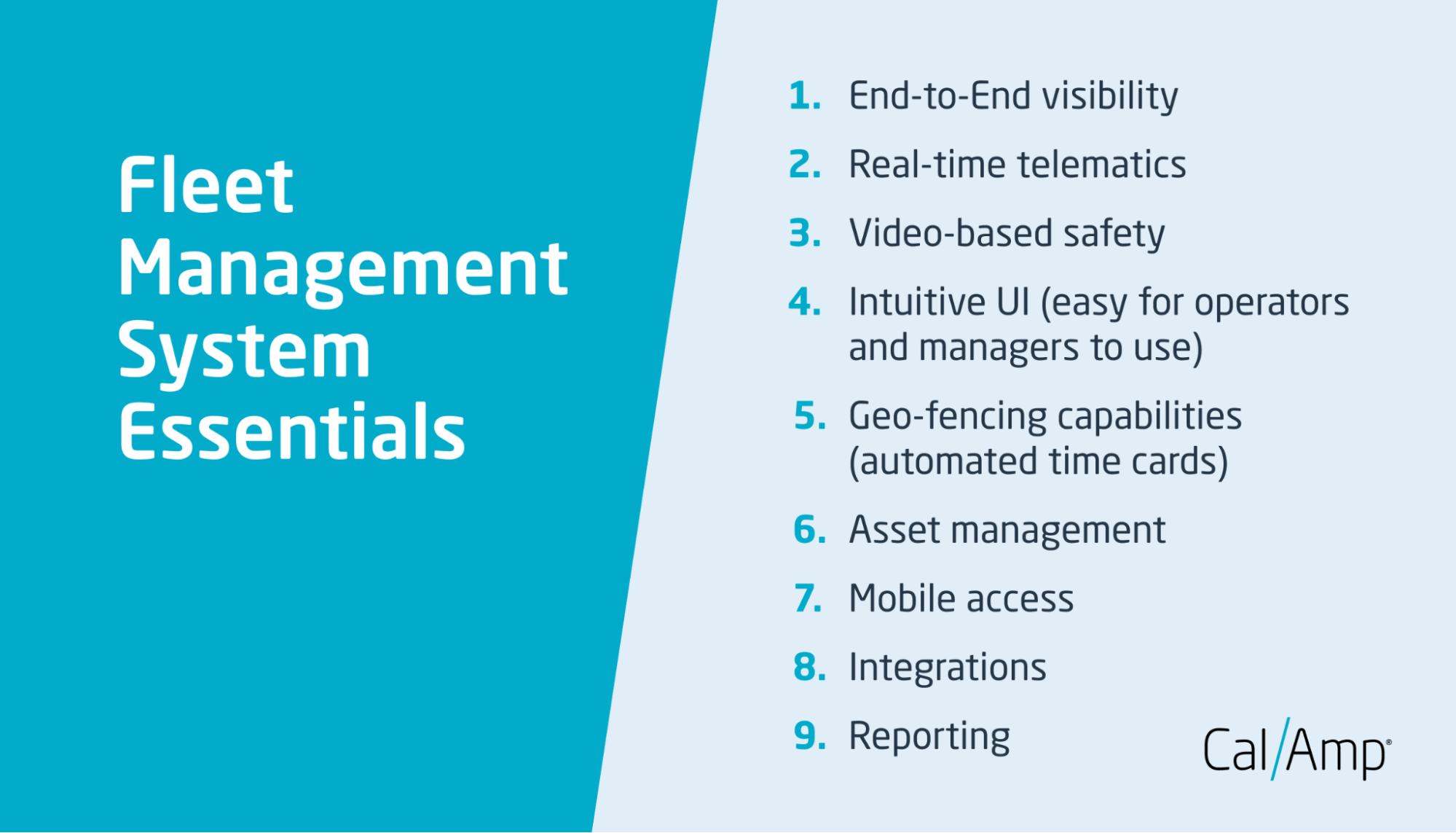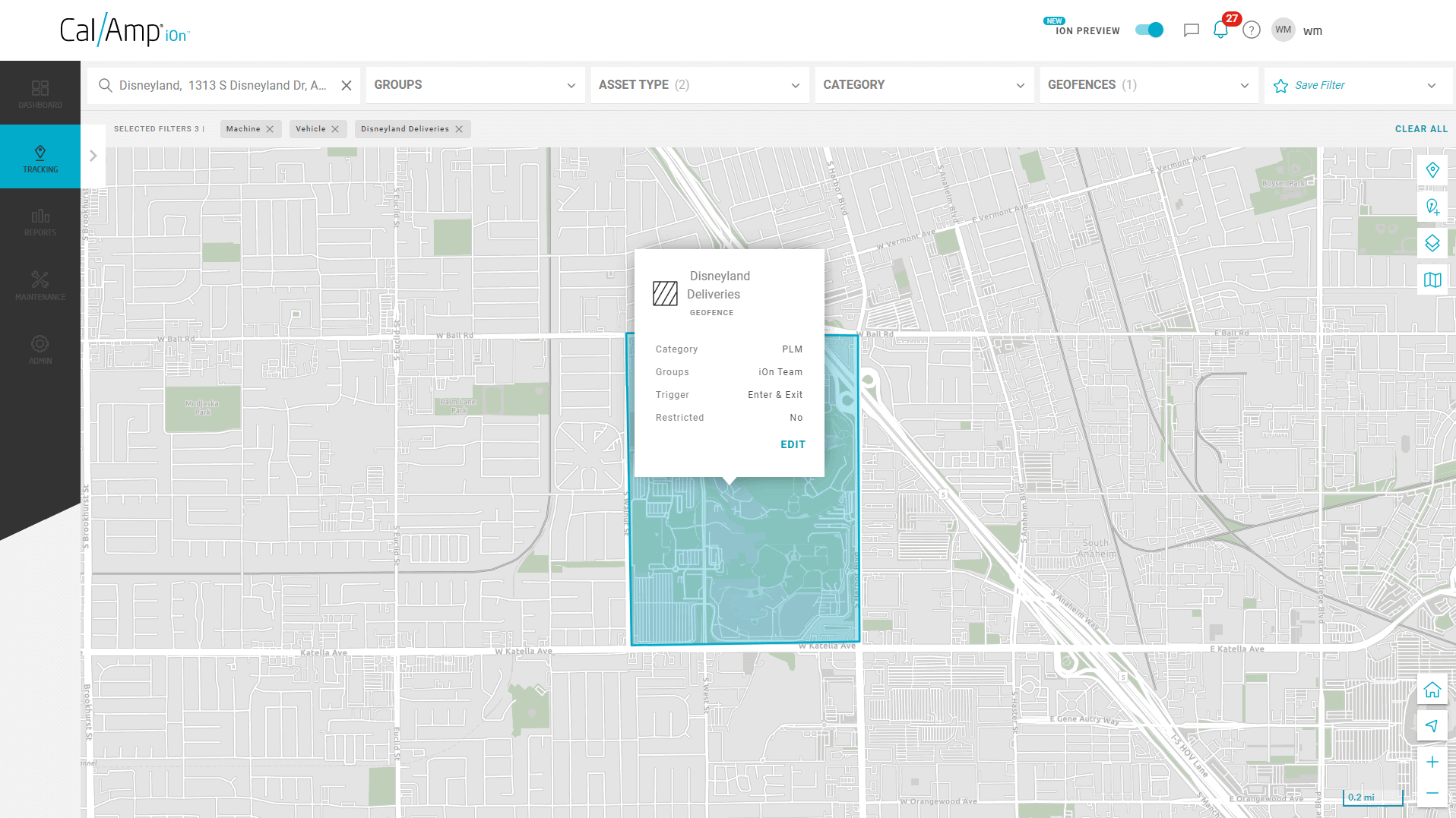Technology can vastly improve how a business functions and the results it delivers. This is also true for fleet management.
Fleet operators can easily monitor vehicles, drivers, and assets using dynamic software. Fleet telematics systems can improve safety, efficiency, and productivity with functionalities tailored to match businesses across industries.
In this article, we’ll cover fleet management systems, how they work, and the eight key benefits that illustrate why every fleet operator needs them. We’ve also listed the essentials for fleet management software so you can choose the right one for you.
What is a fleet management system?
A fleet management system is software that helps monitor, track, and manage a group of vehicles. Business owners and fleet operators use this software to ensure every vehicle is used responsibly and efficiently.
Fleet telematics solutions can also help coach drivers, ensure they drive correctly, and manage assets (equipment or cargo).
A dynamic fleet management software like the CalAmp application uses telematics devices installed on vehicles to enable GPS-based tracking, engine diagnostics, and reports on fuel consumption.
The main aim of using a fleet management system is to boost productivity and improve safety using accurate metrics to fuel data-driven decision-making. Customized reports focusing on high-priority KPIs lead to informed decisions that help reach larger organizational goals.

When operators and owners have the correct tool, they can also save money using preemptive maintenance reports, better scheduling, and automating backend operational processes like payroll management.
8 key benefits of a fleet management system
There are eight crucial advantages of using a comprehensive fleet management system.

Here’s a closer look at each one in detail.
1. Improve safety
Implementing a fleet safety program and encouraging drivers to operate their vehicles safely is essential because it prevents unsafe driving that could cause collisions and other incidents, costing companies thousands of dollars in damages, lost assets, and legal fees.
A fleet management system can provide data insights to track key performance indicators established in the fleet safety program. It also gives operators real-time access to their vehicle diagnostics and enables immediate alerts of risky driving behavior like speeding and harsh braking.
CalAmp also offers video-based safety solutions, where wireless dash cams can help operators monitor driving and coach drivers as they operate their vehicles. It can also provide context and evidence in case of accidents.
Read our ebook to learn more about video-based safety solutions and how they enhance your fleet safety.
2. Real-time monitoring and insights
GPS vehicle tracking and telematics allow fleet operators to track the location of their vehicles in real-time. This improved fleet visibility helps managers better understand what is happening in the field and what was initially planned.
For example, if there is a constant delay at a job site or a particular driver is repeatedly late for their deliveries, operators can get a clear idea of why and take necessary action. They can also plan better routes, improve client communication, and increase customer satisfaction.
Software like the CalAmp application takes fleet visibility a step further. It doesn’t just show you where a driver is. It also collects insights about engine diagnostics, driver behavior, assets, fuel usage, idle times, engine fault codes, and more.
Operators can use filters and the search function to quickly get the metrics they need and make informed decisions on the spot.
3. Enhanced fleet maintenance
Keeping all your fleet vehicles in good shape is key to creating an efficient workforce where all deliveries and services are on time. A fleet with multiple vehicles needing repair hinders efficiency and leads to work delays.
These delays cost companies money and lead to poor customer experiences. It also causes driver frustration and forces others on the fleet to take on extra work to compensate for the downtime caused by constant breakdowns.
These factors are easily fixable with regular fleet maintenance but, if left ignored, can have severe financial consequences. A minor repair that isn’t addressed on time can lead to major damages, long downtimes, and thousands spent at the mechanics.
A fleet management solution that regularly sends vehicle maintenance notifications encourages pre-emptive repairs and reduces maintenance costs. CalAmp sends periodic alerts based on vehicle usage metrics like engine hours, fuel usage, and miles traveled.
With the right software, you can automate fleet maintenance and avoid costly repairs.
4. Custom reporting
Fleet operations are unique for every fleet, and managers prioritize different metrics based on these processes.
A fleet management system that allows managers to generate custom vehicle reports enables efficient decision-making. It helps operators collect the data they need to get actionable insights.

These reports are easy to share with team members and encourage a collaborative approach to fleet improvement.
Custom reporting also includes tailored notifications or alerts that operators can use to effectively track their fleet. Generic warnings could be sufficient for elements like maintenance, but when operators can customize notifications related to driver behavior or individual vehicles, they have better control over their workforce.
5. Remote fleet management
Most current fleets are mobile and on-the-go, with multiple vehicles traversing different routes and likely providing unique deliverables and services.
It’s important that operators have the flexibility to oversee their fleet from a remote location or job site in addition to viewing operations from offices, warehouses or distribution facilities.
An online tool with apps for desktops, laptops, mobiles, and tablets is the key to modern fleet management. It allows managers to get an overview of their entire fleet in one window and access it from anywhere, at any time.
This is especially crucial for international fleets, where operators from different time zones are trying to communicate information asynchronously.
6. Save time and money
All the features mentioned above help fleet owners and businesses improve efficiency. They can get more work done in less time. Consequently, they save money that would’ve otherwise been spent on repairs, delays, extra work hours, and more.
For example, when businesses have the actual tools to implement a fleet safety program, they can improve the rate at which deliveries are on time without the risk of accidents and harsh driving. Apart from the revenue this generates, it can also prevent unnecessary spending that results from collisions and their aftermath.
The same applies to better scheduling, routine maintenance, and customizable reports. A simple improvement in any of these areas can lead to benefits throughout a fleet.
Asset tracking is also essential for preventing losses and spending on replacements. For example, when operators and drivers get alerts of assets like tools being left behind, they can immediately retrieve them instead of losing and replacing them later.
7. Improve customer satisfaction
A well-managed fleet with good planning and active monitoring leads to goods being delivered on time and punctual service completion.
A home services company that relies on manual methods to track drivers and assets is inefficient and slow. Trying to ensure every driver or service member shows up to appointments on time can be tedious, and customers will get frustrated at delayed services.
On the other hand, a fleet that uses good software to plan their routes and track their assets can quickly check whether service members are punctual. They can quickly identify delays, why they occurred, and fix any recurrent errors.
Improved fleet visibility can thus help operators stick to their schedules and keep customers happy.
8. Enforce compliance
Business owners must ensure their fleet complies with local, state, and national guidelines. One is the ELD mandate and your CSA (compliance, safety, and accountability) scores.
An ELD or Electronic Logging Device is a telematics device and tablet mounted in the vehicle that collects driving time, engine data, and miles driven. The ELD solution you use must comply with requirements set by the Federal Motor Carriers Safety Administration (FMCSA).
It is mandated by federal regulations that commercial drivers must use an ELD to collect driver records and engine data based on requirements specified by the FMCSA. While some exceptions to the mandate exist, many commercial fleets require an ELD solution to stay compliant with the latest regulations.
What to look for in a fleet management system
There are tens of fleet management system options on the market, but your operators need the right one to run an efficient workforce.
A complete telematics solution must have the following features.

Let’s take a closer look.
1. End-to-end visibility
Your fleet management system must provide transparency throughout the operation. From job sites to driver routes and vehicle diagnostics, it should give a detailed overview of all the processes that make up a successful fleet.
Generating tailored reports on demand and collecting real-time data about vehicle diagnostics, driver behavior, and work sites is crucial.
Enhancing fleet visibility empowers operators to track and hit the correct metrics. They can make informed decisions in minutes rather than waiting for static reports and implementing changes in weeks or months.
2. Real-time telematics
Fleet software must provide real-time data on driver locations, assets, engine diagnostics, risky driver behavior, and more. Operators need to be able to drill down on every vehicle’s precise location and diagnostics in seconds.
Fleet software typically uses on-vehicle devices to collect and load this data onto the provider’s cloud-based platform. Then, the platform translates and provides actionable data to the end user, in this case, the fleet operators or business owners.
These telematics help improve driver safety, keep assets safe, and ensure services or deliveries are rarely late. It helps create an efficient and safe fleet.
3. Video-based safety
A vital aspect of fleet management is video-based safety. While sharing and training on safety guidelines is the first step to a safe fleet, operators need a way to ensure that drivers are actually following protocols on their routes.
Video cameras and tools like the CalAmp application facilitate this. Managers can see how drivers operate in their field, get instant alerts for risky driving behavior, and instantly contact drivers to correct them.
4. Intuitive UI
Teams need software that is easy for operators and managers of varying technical abilities to use. A complex UI defeats the purpose of a fleet management solution as it slows down information gathering and, thus, decision-making.
Operators and managers must be able to quickly customize the software to match their fleet and set up the right metrics to track and automate report generation.
5. Geo-fencing capabilities
Geofencing allows businesses to automate time cards and streamline payroll. Fleet managers can set up a predefined area around a warehouse, job site, or service location. When a vehicle enters this “fence,” the system automatically checks them in.

Automatic logging takes the guesswork out of payroll and removes the reliance on drivers to report their hours accurately.
Geofencing can also restrict areas that drivers can access when working, such as parks, casinos, or entertainment facilities.
6. Asset management
Track assets in real time using tags that tell you where your equipment is at all times. Use this tracking to ensure tools, cargo, and trailers are never lost.
Without asset tracking, service providers could accidentally lose their equipment by leaving it behind at a client’s house, or it could fall off from their vehicle. In most cases, owners must replace this equipment by digging into their revenue.
Assets can also be stolen or checked out without permission. Managers can prevent all of these scenarios using asset tracking software.
7. Mobile access
Fleet operators can’t always go to multiple sites to manage the vehicles there. It’s easier to oversee the fleet on a desktop or mobile device that lets them log in at any time and get data almost immediately.
Without mobile access, fleet operators are forced to go into the office to collect data, schedule routes, and monitor deliveries. This is not a feasible option for hybrid fleet workers.
8. Integrations
A fleet telematics solution that works with your existing logistics and payroll software is ideal. A platform like CalAmp has developer tools that let you integrate data through the CalAmp Telematics Cloud (CTC) into your internal and external systems.
This vital functionality creates a cohesive work process that lets operators transfer data seamlessly and gain actionable insights about their drivers, assets, and more.
9. Reporting
Ensure your fleet is performing optimally with both short-term and long-term data. Rather than relying on the granular data within a scattered system, you can use fleet management software to gather all relevant data in one place and see how one factor affects another.
Operators also need to export data sets and reports and share them easily with their team or stakeholders. The CalAmp application is the perfect tool for this as it lets you filter and search through all your data and share it with your team in a few clicks.
These are just a few must-have features for a fleet management solution. You can learn more via our free webinar.
Conclusion
Fleet management systems can elevate any fleet, regardless of size or industry. It gives fleet operators all the information they need almost instantly and helps them turn scattered data sets into cohesive, actionable insights.
Operators can track vehicles, monitor driver behavior, coach them, track assets, create geofences, and more. These functionalities make fleet management software a better option than manual fleet tracking.
Take your transportation tracking and logistics to the next level with CalAmp’s advanced fleet telematics. Get started with a demo of our products today!